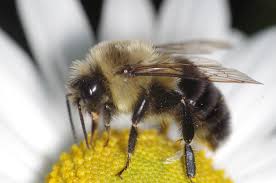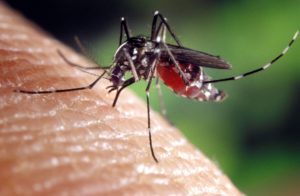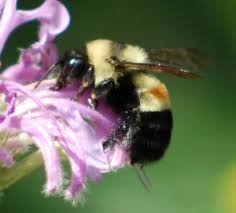22
Jan
Help Get Neurotoxic Pesticide, Chlorpyrifos, Out of Agriculture
 (Beyond Pesticides, January 22, 2019)Â Earlier this month, U.S. Representative Nydia VelĂĄsquez (D-NY) introduced The Ban Toxic Pesticides Act, H.R.230 which bans the insecticide chlorpyrifos from commerce.
(Beyond Pesticides, January 22, 2019)Â Earlier this month, U.S. Representative Nydia VelĂĄsquez (D-NY) introduced The Ban Toxic Pesticides Act, H.R.230 which bans the insecticide chlorpyrifos from commerce.
Chlorpyrifos is a toxic chemical that has been linked to damaging and often irreversible health outcomes in workers, pregnant women, and children. As a result of a revised human health risk assessment, the Environmental Protection Agency (EPA) developed a regulation to ban chlorpyrifos in 2016. Under the Trump Administration, the EPA has taken steps to reverse the regulation.
âItâs unconscionable for EPA to turn a blind eye as children and workers are exposed to this poison,â VelĂĄzquez said. Â âIf the EPA wonât do its job when it comes to chlorpyrifos, then Congress needs to act â and do so quickly.â
Chlorypyrifos is a widely used pesticide. Agriculture companies annually spray 6 million pounds of the substance on crops like citrus, apples, and cherries. Â In the same family as Sarin gas, the substance was initially developed prior to World War II as a chemical weapon. It can overstimulate the nervous system to cause nausea, dizziness, and confusion. With very high exposures (accidents or spills), it can cause respiratory paralysis and even death. When applying the chemical to fields, workers must wear protective garments such as respirators. Workers are then blocked from entering the fields from 24 hours up to 5 days after application due to the chemical exposure risk.
In August, the U.S. 9th Circuit Court of Appeals ordered the Environmental Protection Agency (EPA) to implement its previous proposed ban of the chemical in the U.S. However, the Administration is appealing the ruling, seeking to prevent implementation of the Obama-era ban.
Rep. ValĂĄzaquez states, âAs long as there are efforts underway in the courts or administratively to undo the ban on this toxic pesticide, Iâll be working to see chlorypyrifos removed from commerce through the legislative process.â
There is a strong recent history of action of introducing legislation to remove chlorpyrifos from use. The same legislation being proposed by Valazquez was introduced in the last Congress as H.R. 3380, Pesticide Protection Act (2017). In the closing days of the 115th Congress, U.S. Senator Brian Schatz (D-Hawaiâi) introduced a bill to ban chlorpyrifos. The Prohibit Chlorpyrifos Poisoning Students Act (S. 3764) would elevate Hawaiâiâs state ban to the national level, banning the use of the chemical near (within 300 feet of) schools in 2019 and banning its sale and distribution altogether the following year. The legislation follows a 2017 bill introduced by Senator Tom Udall (D-NM), Protect Children, Farmers and Farmworkers from Nerve Agent Pesticides Act, S. 1624, that deems any food with chlorpyrifos residues to be adulterated and therefore illegal.
EPA negotiated a cancellation of all residential uses (with the exception of golf courses and disease-carrying mosquitoes) in 2000 after finding significant neurotoxic effects on children. In June, 2018, Hawaiâi became the first state to ban chlorpyrifos, effective 2022.
Given the abundant research demonstrating deleterious effects of chlorpyrifos on human health –including a 2016 EPA human risk assessment that found the agencyâs exposure threshold is exceeded for children, and citing concerns about chlorpyrifos levels in the air in schools, homes, and communities — it is critical to support a complete ban on the chemical.
H.R. 230 has 56 house representative co-sponsors. If your representative has already signed on, you will be prompted to send them a thank you note that encourages them to keep advocating for human and environmental health.
Letter to U.S. Representatives:
I am writing to request that you co-sponsor The Ban Toxic Pesticides Act, H.R.230. Introduced by Rep. Nydia VelĂĄsquez, the act bans the insecticide chlorpyrifos from commerce. Chlorpyrifos is a toxic chemical that has been linked to damaging and often irreversible health outcomes in workers, pregnant women, and children.
 EPA negotiated a cancellation of all residential (with the exception of golf courses and disease-carrying mosquitoes) uses in 2000, after determining that the neurotoxic effects to children exceeded reasonable levels. A 2016 revised EPA human health risk assessment of chlorpyrifos found that the agencyâs exposure threshold is exceeded for children, citing concerns about levels in the air at schools, homes, and communities in agricultural areas. As a result, the EPA developed a regulation to ban chlorpyrifos. Under the Trump Administration, the EPA has taken steps to reverse the regulation despite clear human health hazards.
In June of 2018, Hawaiâi became the first state to ban chlorpyrifos (effective in 2022). The evidence of deleterious effects and momentum of policy change make it clear: there is an urgent need to extend protection from chlorpyrifos to children and others in all states.
Please confirm with me that you will co-sponsor H.R. 230, The Ban Toxic Pesticides Act.
Thank you.
Sincerely,
Co-sponsors in the last (115th) Congress (56): Chairman RaĂșl M. Grijalva, Rep. David N. Cicilline, Rep. Debbie Wasserman Schultz, Rep. McNerney, Rep. Peter DeFazio, Rep. Blumenauer, Rep. Bonamici, Rep. Roybal-Allard, Rep. Quigley, Rep.
Lee, Rep. Chu, Rep. Eleanor H. Norton, Rep. Frederica S. Wilson, Rep. Gabbard, Rep. Jackson Lee, Rep. Peter Welch, Rep. Mark Pocan, Rep. Espaillat, Rep. Lipinski, Rep. Kathy Castor, Rep. Carolyn B. Maloney, Rep. Steve Cohen, Rep. Ro Khanna, Rep. Tim Ryan, Rep. Yvette D. Clarke, Rep. Chris Smith, Rep. Pramilia Jayapal, Rep. Carol Shea-Porter, Rep. Bonnie Watson Coleman, Rep. Gregory Meeks, Rep. Albio Sires, Rep. Nanette Diaz Barragån, Rep. Dwight Evans, Rep. Betty McCollum, Rep. Zoe Lofgren, Rep. Jerry Nadler, Rep. Jan Schakowsky, Rep. Raskin, Rep. McGovern, Rep. Ted W. Lieu, Rep. Bobby Rush, Rep. Pingree, Rep. Grace Meng, Rep. Adam Smith, Rep. Huffman, Rep. Fudge, Rep. Colleen Hanabusa, Rep. Donald M. Payne, Jr, Rep. Tony Cårdenas, Rep. Matt Cartwright, Rep. Pete Visclosky, Rep. Jimmy Gomez, Rep. Jackie Speier, Rep. Grace Napolitano, Rep. Seth Moulton, Rep. Katherine Clark.









 (Beyond Pesticides, January 18, 2019)Â
(Beyond Pesticides, January 18, 2019)Â  (Beyond Pesticides, January 17, 2019) Although the rusty patched bumblebee was placed on the endangered species list in 2017, the Trump Administration has failed to put in place legally required safeguards for the species. As a result, the Natural Resources Defense Council (NRDC) is suing the Administrationâs Department of the Interior (DOI) for failing to designate locations where additional protections could help restore the endangered bumblebeeâs population. Advocates say DOIâs failure to comply with requirements under the Endangered Species Act (ESA) is consistent with the Trump Administrationâs
(Beyond Pesticides, January 17, 2019) Although the rusty patched bumblebee was placed on the endangered species list in 2017, the Trump Administration has failed to put in place legally required safeguards for the species. As a result, the Natural Resources Defense Council (NRDC) is suing the Administrationâs Department of the Interior (DOI) for failing to designate locations where additional protections could help restore the endangered bumblebeeâs population. Advocates say DOIâs failure to comply with requirements under the Endangered Species Act (ESA) is consistent with the Trump Administrationâs  (Beyond Pesticides, January 16, 2019) Preliminary counts in California indicate the western monarch butterfly population dropped 86% from 2017 to 2018. The survey is a result of an
(Beyond Pesticides, January 16, 2019) Preliminary counts in California indicate the western monarch butterfly population dropped 86% from 2017 to 2018. The survey is a result of an  (Beyond Pesticides, January 14, 2019)Â Â
(Beyond Pesticides, January 14, 2019)Â Â  (Beyond Pesticides, January 14, 2019)Â Tell Congress to stop the Trump administration from opening the floodgates to permit widespread use of antibiotics in citrus production (grapefruits, oranges and tangerines).
(Beyond Pesticides, January 14, 2019)Â Tell Congress to stop the Trump administration from opening the floodgates to permit widespread use of antibiotics in citrus production (grapefruits, oranges and tangerines). (Beyond Pesticides, January 11, 2019) Plans to weaken farmworker protections from toxic pesticides were dropped by Acting U.S. Environmental Protection Agency (EPA) Administrator Andrew Wheeler, according to an undated letter sent to Senator Tom Carper (D-DE) late last year. Reports indicate the action was part of a deal cut by both parties that permitted confirmation of
(Beyond Pesticides, January 11, 2019) Plans to weaken farmworker protections from toxic pesticides were dropped by Acting U.S. Environmental Protection Agency (EPA) Administrator Andrew Wheeler, according to an undated letter sent to Senator Tom Carper (D-DE) late last year. Reports indicate the action was part of a deal cut by both parties that permitted confirmation of  (Beyond Pesticides, January 9, 2019) It is news to approximately no one that pollinators are in trouble worldwide. A series of papers by biologists at the University of Guelph, Ontario, posits that pesticide regulations aimed at protection of honey bees fall far short of the critical task of protecting the multitude of bee species that are important pollinators of human food crops. These recent papers arose from 2017 workshops that involved 40 bee researchers from various universities, and representatives from Canadian, U.S., and European regulatory agencies, and from the agrochemical industry.
(Beyond Pesticides, January 9, 2019) It is news to approximately no one that pollinators are in trouble worldwide. A series of papers by biologists at the University of Guelph, Ontario, posits that pesticide regulations aimed at protection of honey bees fall far short of the critical task of protecting the multitude of bee species that are important pollinators of human food crops. These recent papers arose from 2017 workshops that involved 40 bee researchers from various universities, and representatives from Canadian, U.S., and European regulatory agencies, and from the agrochemical industry. (Beyond Pesticides, January 8, 2019) At the end of December, the U.S. Department of Agriculture (USDA) finalized
(Beyond Pesticides, January 8, 2019) At the end of December, the U.S. Department of Agriculture (USDA) finalized 

 (Beyond Pesticides, January 7, 2019)Â As the dust settles on the final Farm Bill, which passed the U.S. Senate and House of Representatives last month, it is clear that neither the substance nor the process on a range of issues meet the urgent need to address key sustainability issues that put the future in peril.
(Beyond Pesticides, January 7, 2019)Â As the dust settles on the final Farm Bill, which passed the U.S. Senate and House of Representatives last month, it is clear that neither the substance nor the process on a range of issues meet the urgent need to address key sustainability issues that put the future in peril. (Beyond Pesticides, January 4, 2019)Â First, the good news: plaintiffs in a
(Beyond Pesticides, January 4, 2019)Â First, the good news: plaintiffs in a  (Beyond Pesticides, January 3, 2019) Bee-toxic pesticides
(Beyond Pesticides, January 3, 2019) Bee-toxic pesticides  (Beyond Pesticides, January 2, 2019) The âindoor microbiomeâ of yoga studios and other athletic facilities often contain significant levels of antibacterial chemicals like
(Beyond Pesticides, January 2, 2019) The âindoor microbiomeâ of yoga studios and other athletic facilities often contain significant levels of antibacterial chemicals like  (Beyond Pesticides, December 21-31, 2018)  As we look ahead to the new year, we wish you good health, extend our appreciation for your being a part of the Beyond Pesticides network, and ask you to consider a contribution to Beyond Pesticides. Your support is critical to our program and deeply appreciated.
(Beyond Pesticides, December 21-31, 2018)  As we look ahead to the new year, we wish you good health, extend our appreciation for your being a part of the Beyond Pesticides network, and ask you to consider a contribution to Beyond Pesticides. Your support is critical to our program and deeply appreciated. (Beyond Pesticides, December 21, 2019)
(Beyond Pesticides, December 21, 2019)  (Beyond Pesticides, December 20, 2018) Using low doses of the herbicide paraquat and common proteins found in food called lectins, researchers were able to recreate the symptoms of Parkinsonâs disease in rats. Results of this study,
(Beyond Pesticides, December 20, 2018) Using low doses of the herbicide paraquat and common proteins found in food called lectins, researchers were able to recreate the symptoms of Parkinsonâs disease in rats. Results of this study,  (Beyond Pesticides, December 19, 2018)Â As the dust still settles on the final Farm Bill, which passed the U.S. Senate and House of Representatives last week, it is clear that neither the substance nor the process on a range of issues meet the urgent need to address key sustainability issues that put the future in peril.
(Beyond Pesticides, December 19, 2018)Â As the dust still settles on the final Farm Bill, which passed the U.S. Senate and House of Representatives last week, it is clear that neither the substance nor the process on a range of issues meet the urgent need to address key sustainability issues that put the future in peril. (Beyond Pesticides, December 18, 2018)Â The ingredients not listed on a pesticide product are not fully reviewed for their adverse effects may be the most toxic chemicals in the formulation. Recent research, Toxicity of formulants and heavy metals in glyphosate-based herbicides and other pesticides (Toxicology Reports 5, 2018), by Defarge, de VendĂŽmois, and SĂ©ralini demonstrates the need to disclose and test all ingredients in pesticide products, as well as the full formulation that includes âinertâ or nondisclosed ingredients. While glyphosate/Roundup is obviously not allowed to be used in organic production, this research reaffirms the need to evaluate full formulations of substances allowed for use in organic.
(Beyond Pesticides, December 18, 2018)Â The ingredients not listed on a pesticide product are not fully reviewed for their adverse effects may be the most toxic chemicals in the formulation. Recent research, Toxicity of formulants and heavy metals in glyphosate-based herbicides and other pesticides (Toxicology Reports 5, 2018), by Defarge, de VendĂŽmois, and SĂ©ralini demonstrates the need to disclose and test all ingredients in pesticide products, as well as the full formulation that includes âinertâ or nondisclosed ingredients. While glyphosate/Roundup is obviously not allowed to be used in organic production, this research reaffirms the need to evaluate full formulations of substances allowed for use in organic. (Beyond Pesticides, December 17, 2018)Â Cardiovascular disease is a major cause of poor health and mortality across the world. Much is known about congenital and behavioral contributors to the disease, yet to date, little research has focused on potential environmental factors, including the possible contribution to cardiovascular disease (CVD) of exposures to toxic chemicals in the workplace.
(Beyond Pesticides, December 17, 2018)Â Cardiovascular disease is a major cause of poor health and mortality across the world. Much is known about congenital and behavioral contributors to the disease, yet to date, little research has focused on potential environmental factors, including the possible contribution to cardiovascular disease (CVD) of exposures to toxic chemicals in the workplace.  (Beyond Pesticides, December 14, 2018) The richness, diversity, and abundance of wild bumblebees in Vermont has plummeted over the last century, according to an
(Beyond Pesticides, December 14, 2018) The richness, diversity, and abundance of wild bumblebees in Vermont has plummeted over the last century, according to an  (Beyond Pesticides, December 13, 2018)Â The U.S. is pushing back against international standards that restrict pesticides by appealing to the World Trade Organization (WTO) to intervene. At issue are new EU maximum residue levels (MRLs) on food for the following pesticides: buprofezin, diflubenzuron, ethoxysulfurom, ioxynil, molinate, picoxystrobin and tepraloxydim.
(Beyond Pesticides, December 13, 2018)Â The U.S. is pushing back against international standards that restrict pesticides by appealing to the World Trade Organization (WTO) to intervene. At issue are new EU maximum residue levels (MRLs) on food for the following pesticides: buprofezin, diflubenzuron, ethoxysulfurom, ioxynil, molinate, picoxystrobin and tepraloxydim. (Beyond Pesticides, December 12, 2018)Â Costa Rica is currently experiencing exponential growth in its banana and pineapple farming industries and with it an increase in intensive pesticide applications. Recent
(Beyond Pesticides, December 12, 2018)Â Costa Rica is currently experiencing exponential growth in its banana and pineapple farming industries and with it an increase in intensive pesticide applications. Recent 
